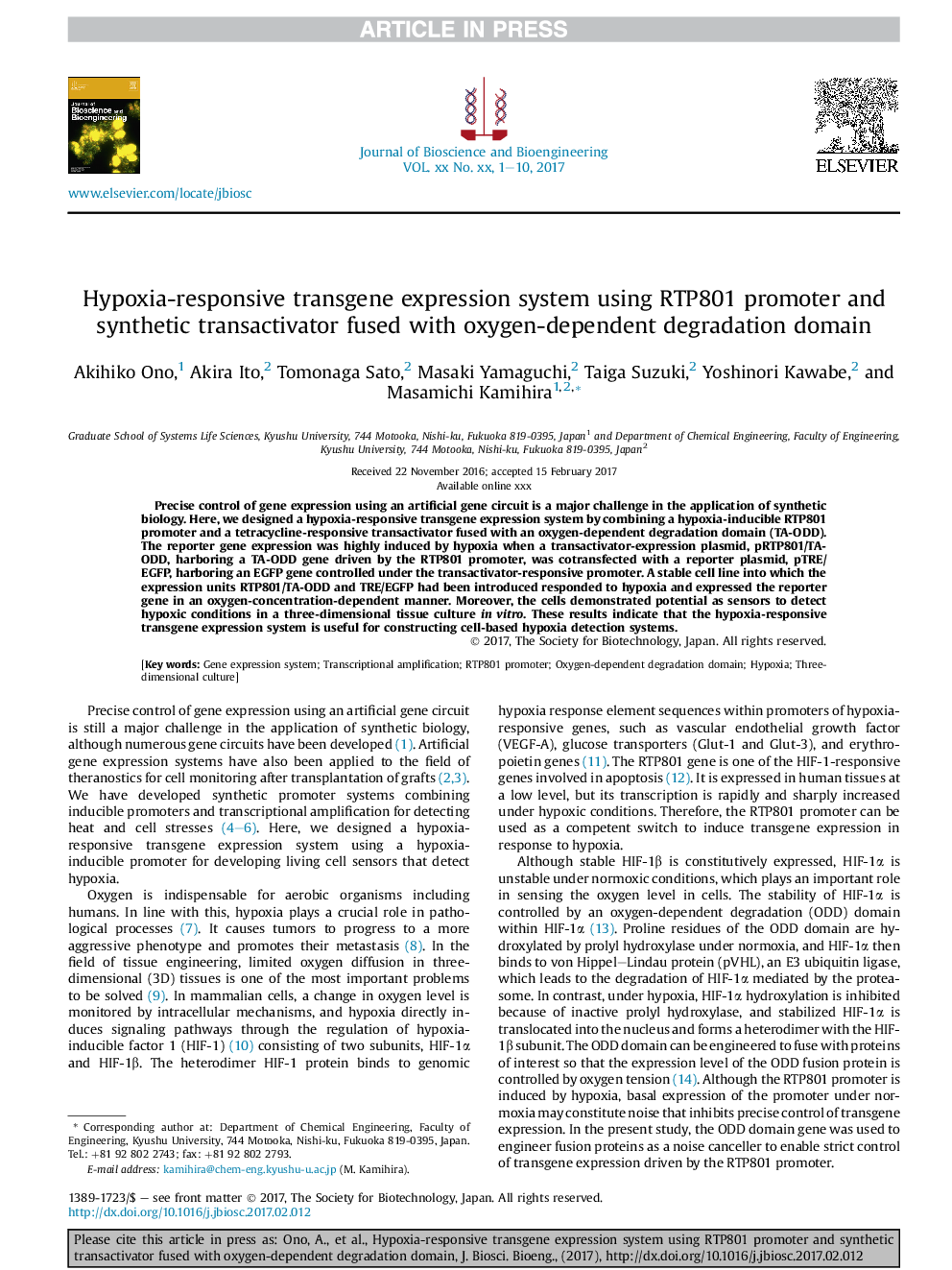| Article ID | Journal | Published Year | Pages | File Type |
|---|---|---|---|---|
| 4753316 | Journal of Bioscience and Bioengineering | 2017 | 10 Pages |
Abstract
Precise control of gene expression using an artificial gene circuit is a major challenge in the application of synthetic biology. Here, we designed a hypoxia-responsive transgene expression system by combining a hypoxia-inducible RTP801 promoter and a tetracycline-responsive transactivator fused with an oxygen-dependent degradation domain (TA-ODD). The reporter gene expression was highly induced by hypoxia when a transactivator-expression plasmid, pRTP801/TA-ODD, harboring a TA-ODD gene driven by the RTP801 promoter, was cotransfected with a reporter plasmid, pTRE/EGFP, harboring an EGFP gene controlled under the transactivator-responsive promoter. A stable cell line into which the expression units RTP801/TA-ODD and TRE/EGFP had been introduced responded to hypoxia and expressed the reporter gene in an oxygen-concentration-dependent manner. Moreover, the cells demonstrated potential as sensors to detect hypoxic conditions in a three-dimensional tissue culture in vitro. These results indicate that the hypoxia-responsive transgene expression system is useful for constructing cell-based hypoxia detection systems.
Related Topics
Physical Sciences and Engineering
Chemical Engineering
Bioengineering
Authors
Akihiko Ono, Akira Ito, Tomonaga Sato, Masaki Yamaguchi, Taiga Suzuki, Yoshinori Kawabe, Masamichi Kamihira,
